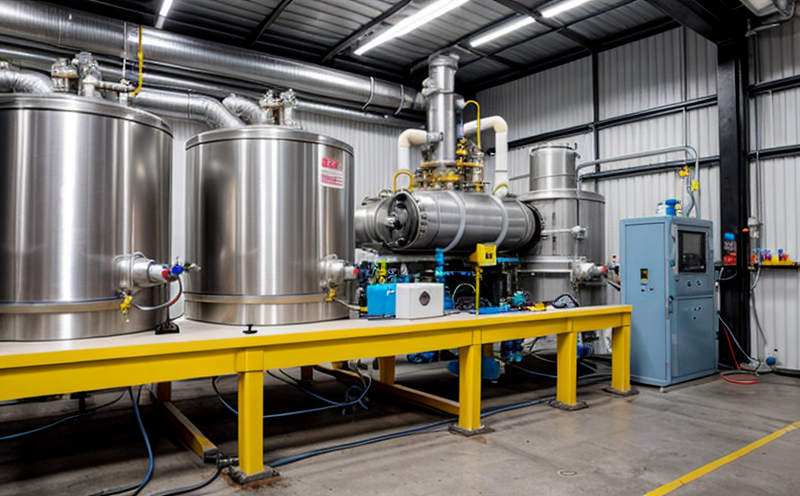ASTM E481 Neutron Activation Detector Calibration Testing
ASTM E481 specifies a procedure for calibrating neutron activation detectors used in radiation and nuclear testing. This service ensures the accuracy of neutron flux measurements, which is critical for ensuring safety, compliance with regulatory standards, and reliability in materials testing, particularly in industries dealing with nuclear fuels or components. Neutron activation detectors are widely used to measure the neutron flux within reactors, accelerators, and other high-flux environments. The ASTM E481 procedure involves exposing a detector to a known neutron source for a specific duration under controlled conditions. After exposure, the detector is analyzed to determine its response to the neutron flux. This calibration process ensures that subsequent measurements of neutron flux are accurate and reliable. The importance of this service cannot be overstated. Inaccurate measurements can lead to safety hazards, non-compliance with regulatory standards, and costly rework or scrapping of materials. For quality managers and compliance officers, ensuring the accuracy of neutron activation detector calibration is essential for maintaining operational integrity and meeting industry requirements. R&D engineers benefit from this service by having reliable data on which they can base their design decisions. This ensures that new materials and reactor designs are safe and effective. Procurement teams also rely on accurate neutron flux measurements to ensure the quality of components purchased, especially those intended for use in nuclear applications.Applied Standards
ASTM E481 is one of several standards that govern neutron activation detector calibration. The standard provides a detailed procedure for calibrating these detectors using well-defined protocols and parameters. Other relevant standards include ISO 17653, which specifies the requirements for nuclear fuel testing laboratories, and EN 302-964, which covers the quality assurance of nuclear power plants. Compliance with these standards is crucial for ensuring that neutron activation detector calibration meets international best practices. The procedure outlined in ASTM E481 ensures that detectors are calibrated under controlled conditions to minimize errors and maximize accuracy. This standard is widely recognized and accepted by regulatory bodies around the world, making it a cornerstone of neutron flux measurement reliability.Scope and Methodology
The ASTM E481 procedure involves several key steps that ensure accurate calibration of neutron activation detectors. The first step is to prepare the detector for exposure to the neutron source. This includes ensuring that the detector is free from contamination and that it is properly aligned with the neutron source. Once prepared, the detector is exposed to a known neutron flux for a specific duration. The duration of this exposure is carefully controlled to ensure that the detector responds accurately to the neutron flux. After exposure, the detector is analyzed using spectral analysis techniques to determine its response to the neutron flux. The methodology also includes detailed acceptance criteria that specify the allowable ranges for detector response. These criteria ensure that only detectors that meet these standards are considered calibrated and ready for use in radiation and nuclear testing applications. Compliance with ASTM E481 ensures that neutron activation detectors are accurate, reliable, and safe to use.Customer Impact and Satisfaction
- Enhanced Safety: Accurate calibration of neutron activation detectors ensures that the measurements taken are reliable. This is crucial for maintaining safety in high-flux environments, such as nuclear reactors.
- Compliance with Regulatory Standards: Ensuring compliance with ASTM E481 helps clients avoid costly penalties and fines associated with non-compliance.
- Informed Decision Making: Accurate data from calibrated detectors allows R&D engineers to make informed decisions about material selection and reactor design. This leads to safer, more efficient designs.
- Enhanced Quality Assurance: The use of ASTM E481 ensures that the quality of materials used in nuclear applications is consistently high, leading to greater customer satisfaction.
Frequently Asked Questions
What is neutron activation detector calibration?
Neutron activation detector calibration involves exposing a detector to a known neutron flux for a specific duration and then analyzing its response. This process ensures that the detector accurately measures neutron flux, which is crucial for safety and compliance in nuclear testing.
Why is ASTM E481 important?
ASTM E481 provides a standardized procedure for calibrating neutron activation detectors. This ensures that the measurements taken are accurate and reliable, which is critical for maintaining safety and compliance in radiation and nuclear testing.
What industries benefit from this service?
This service benefits quality managers, compliance officers, R&D engineers, and procurement teams in industries dealing with nuclear fuels or components. These sectors rely on accurate neutron flux measurements to ensure safety and reliability.
How often should neutron activation detectors be calibrated?
The frequency of calibration depends on the specific application and regulatory requirements. However, it is generally recommended that neutron activation detectors be recalibrated annually or whenever there are significant changes in the testing environment.
What happens if a detector does not meet ASTM E481 criteria?
If a detector does not meet the acceptance criteria specified in ASTM E481, it is considered uncalibrated and should not be used for neutron flux measurements. This ensures that only accurate and reliable detectors are used in radiation and nuclear testing applications.
What is the role of spectral analysis in this process?
Spectral analysis is used to determine the response of a neutron activation detector to the known neutron flux. This analysis helps ensure that the detector accurately measures neutron flux and meets the acceptance criteria specified in ASTM E481.
How does this service contribute to customer satisfaction?
By ensuring accurate, reliable, and compliant measurements, this service helps customers achieve their goals for safety, compliance, and product quality. Our commitment to accuracy and reliability ensures that our customers can trust the results of our tests.
What standards are relevant to neutron activation detector calibration?
Relevant standards include ASTM E481, ISO 17653, and EN 302-964. These standards provide detailed procedures for calibrating neutron activation detectors and ensure that the measurements taken are accurate and reliable.





